The Hisense A9 is a black and white e-ink smartphone, and its main selling point is its fast refresh rate.
On this e-ink smartphone, you can watch videos on Youtube without any lag - but the videos will look like a moving series of Xeroxed images.
At the price of around 400 USD, which may include shipping or taxes depending on your store, this phone ain't cheap. Because e-ink screens aren't in high demand, the price of an e-ink screen and its drivers are higher than a regular screen. At that upfront cost, it makes sense from a vendor's perspective to price the phone high and tack on extra storage (the A9 has 128GB) and RAM (6GB). In addition to 128GB of disk space and 6GB of RAM, the Hisense A9 makes use of a Qualcomm Snapdragon 662 chip, commonly used on last year's midrange phones.
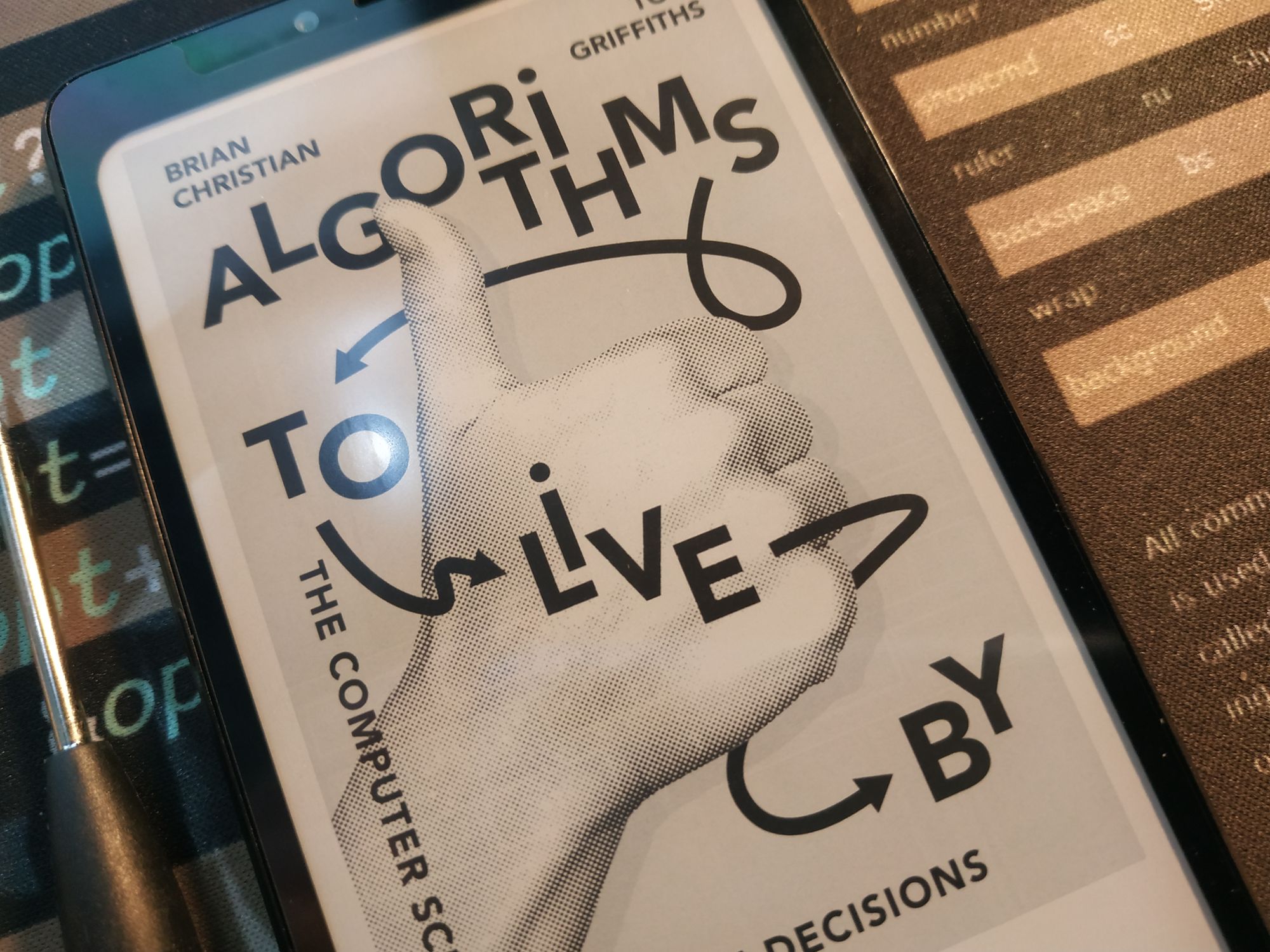
A relevant caveat with this phone is that it does not have a global release. It's a Chinese phone intended for a Chinese domestic market that tacked on English as a feature (with some text still remaining in Chinese). The implications of a Chinese domestic market are:
- Fewer consumer protections than you may be used to.
- Chinese software that does not apply to your locale's infrastructure.
- Privacy issues.
These issues are addressed by:
- Disabling trackers.
- Removing bloatware.
- Installing a firewall that forbids the Hisense A9 from phoning home.
See the maintaining privacy section to get a picture of what it takes to protect your data — for some folks such as myself, this step is something we do for all phone brands, but it may be what makes or breaks your interest in this phone.
Why buy a black and white phone?
I bought the Hisense A9 because I like e-ink devices and I knew that the form factor and limitations of a grayscale screen would dictate the success of my reading habit. For the past month that has been true: I've finished reading whole books on the tiny screen because of its small size and light weight. Your own experience with this phone will vary based on what you will use it for; there are a few threads on Reddit selling off the phone because it doesn't support their mobile carrier's bands. On my end, I wanted a reader that had a camera in case of emergencies, so I haven't used this phone as a phone. (I have a dumbphone for cellphone calls.)
I've been using it for the past month and a half to read ebooks, surf the net, and listen to music. In short, I'm using it to trick myself into thinking it's 2009 — RSS feeds are still in, folks are still buying ipods, and nobody is "online, all the time".
Do I like it? Hell yes. I knew without a doubt that the speed was 70% of what would drive successful usage, and I had some idea that form factor affects usage, but this phone really drives that point home for the importance of form factor. Why is this so relevant? Because if we want to change our habits, our environment plays a huge role. And tools are a part of that.
Breaking down its specs
Apart from 6GB of RAM, 128GB of space, and a custom Android 11, the Hisense A9 has:
- E-Ink Carta 1200 screen (with a matte screen protector)
- a 4000mAH lithium-polymer battery
- 13MP back camera
- 2MP front camera
- a Hi-Fi audio chip with a 3.5mm audio jack
- Bluetooth 5.0
- USB-C fast charging port
Battery
I read on the phone maybe 3-4 hours in a day, and only from the 50-79% range (so I use only 30% of the phone's battery). I find myself charging once every 1.5-2 days. That means that the phone's battery uses roughly 30% of its power for 6 hours of use.
These specs are not from a stock configuration of the phone. I used the universal android debloater (UAD), have a VPN, and turned off as many trackers as I could. I also use the ultra battery saver when I can.
To those who have used e-ink devices before, those numbers are not very encouraging. I too was pretty shocked at the drain. And after quite a bit of debloat work, too! Take a look at what drains the battery:
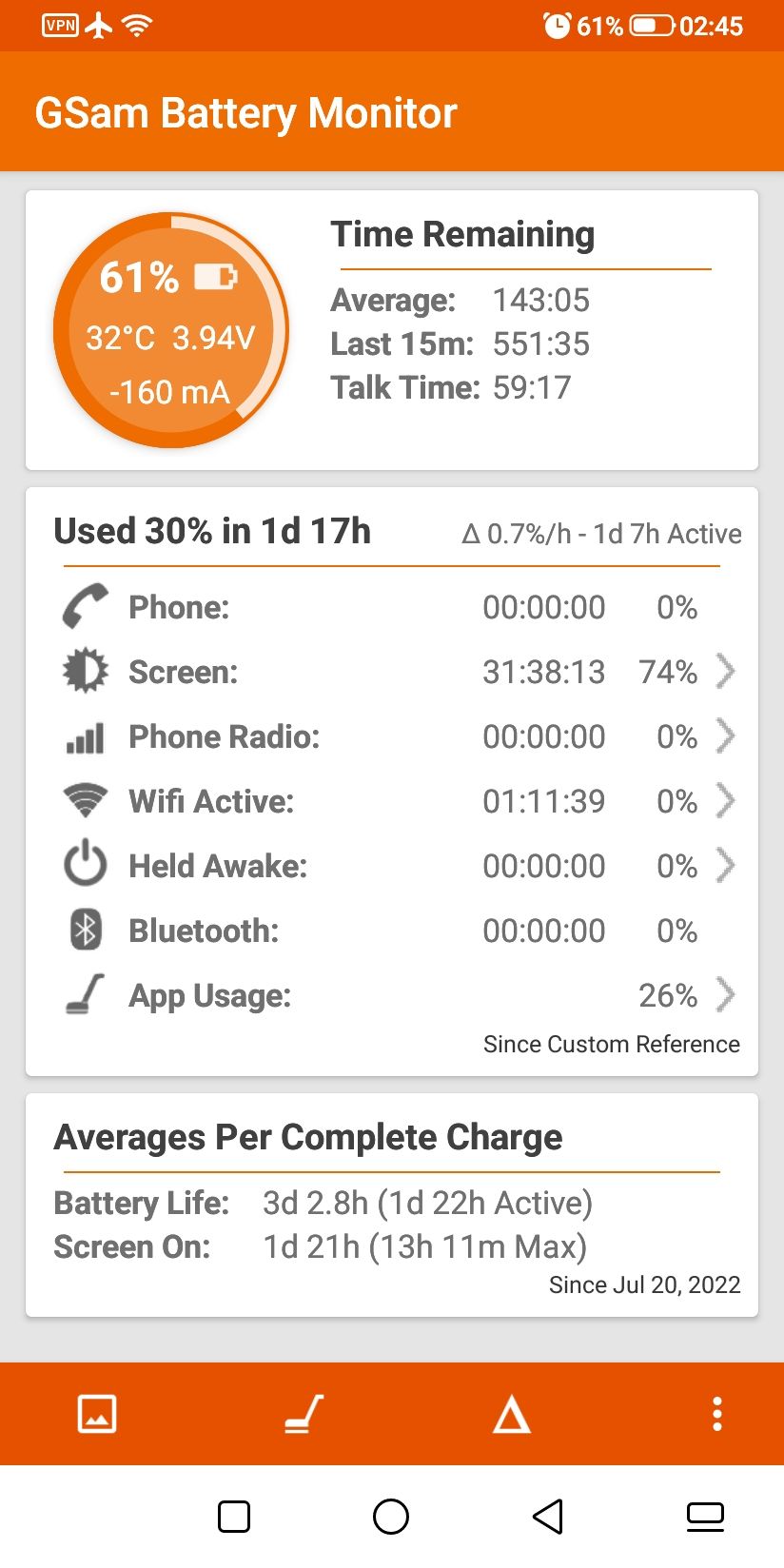

The screen and system notification are the largest guzzlers. System notification encompasses a wide range of "wait" services, and my understanding is that this is par for the course. As for the screen, I suspect this is due to the touchscreen function, light, and proprietary drivers.
Cameras
I've only used the rear camera. All photos and videos retain color information. I use Open Camera and find that the photos are sharp. The colors appear artificially saturated, but I suspect that's my fault for not setting up the software correctly.
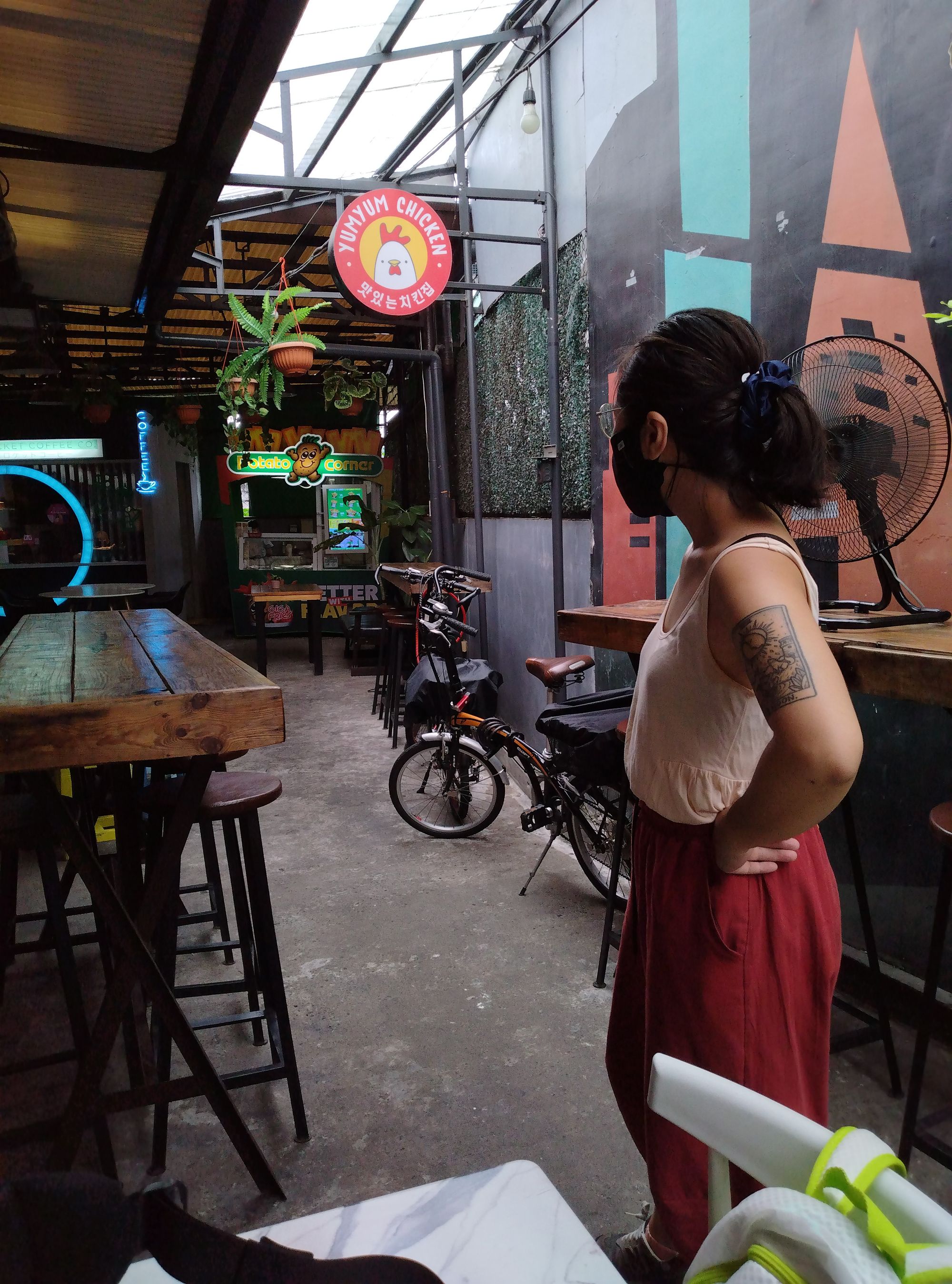
Audio (Hi-Fi chip, Bluetooth aptX)
A Hi-Fi tag appears on the top bar of the phone when you plug in earphones or headphones. I have also used the Bluetooth audio connection with a pair of Lypertek Z3s, and they sound fine to an untrained ear.
I was able to test aptX and AAC — you'll see those two options appear under Developer Options. aptX HD also appears as an option, but my Lyperteks don't support it.
Audio is one of those features where there are many variables involved in testing: you need good a good pair of outputs (headset, headphones, earphones), a good song in the right format (such as FLAC) to test with, and the chip. Then you need to compare with the same song, same output, but different chip. There are also needs, such as the ability to stream steadily when in a call or listening to audio.
Using a grayscale screen with software designed for color
One of the interesting things about this phone is seeing to what extent we rely on color to guide us through software. For some apps, color is more necessary than others, even when shape is used to help users parse information. NetGuard is one such example:
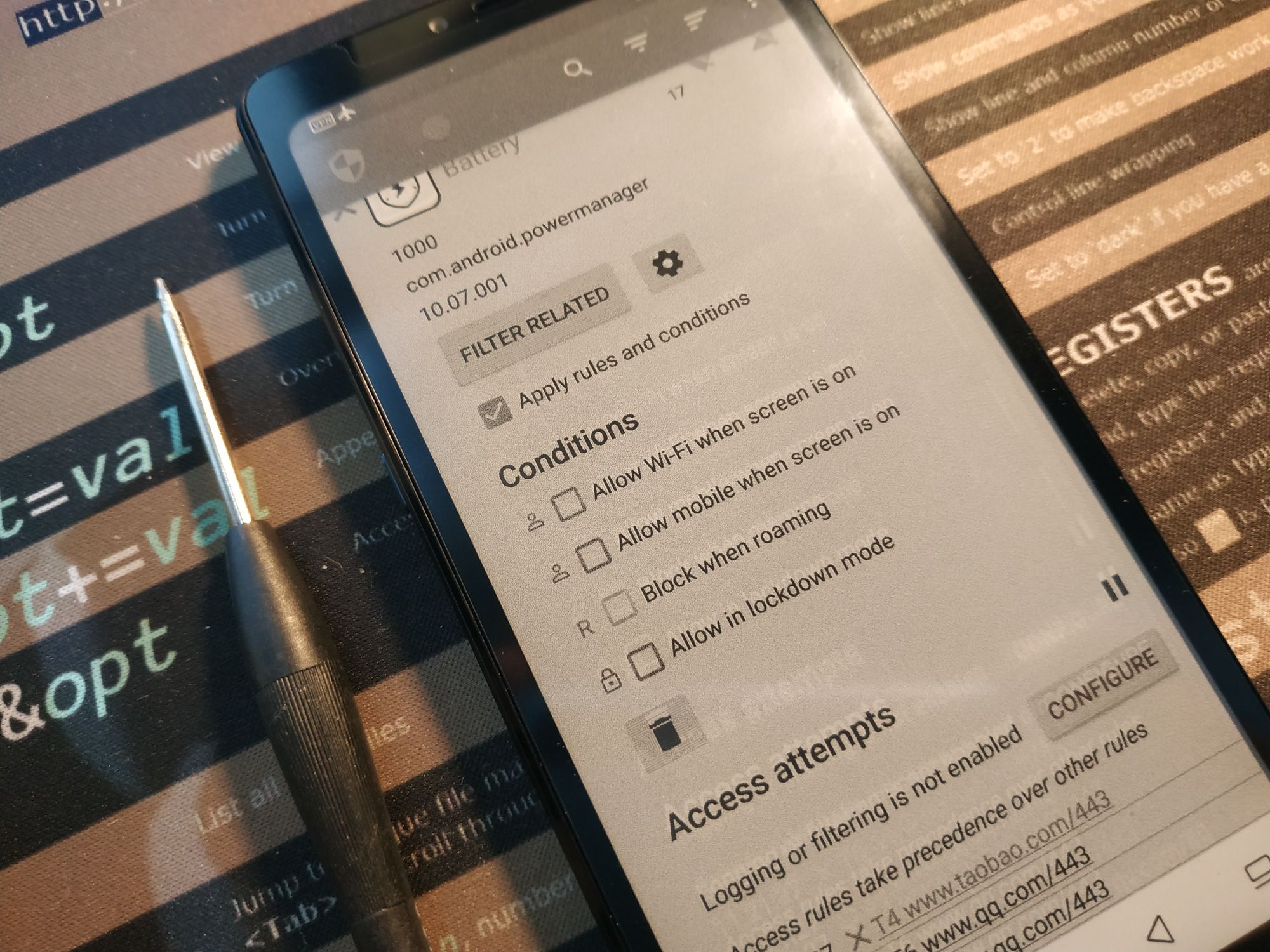
Toggles and states can be difficult to identify. In VLC, an active state appears gray (inactive) because the color that denote "selected/active" is a lighter color than the actual inactive state.
That being said, this is not the fault of NetGuard, VLC or any other app. Nobody expects a black and white phone!
To help with readability, I try to use Light Mode on all my apps.
Reading with a small screen
The Hisense A9 has four refresh modes, listed here in order of quality:
- Clear
- Balanced
- Smooth
- Speed
The difference when reading between Balanced and Smooth is the amount of ghosting. They have the same responsiveness. I don't use Speed at all, the ghosting is too heavy.
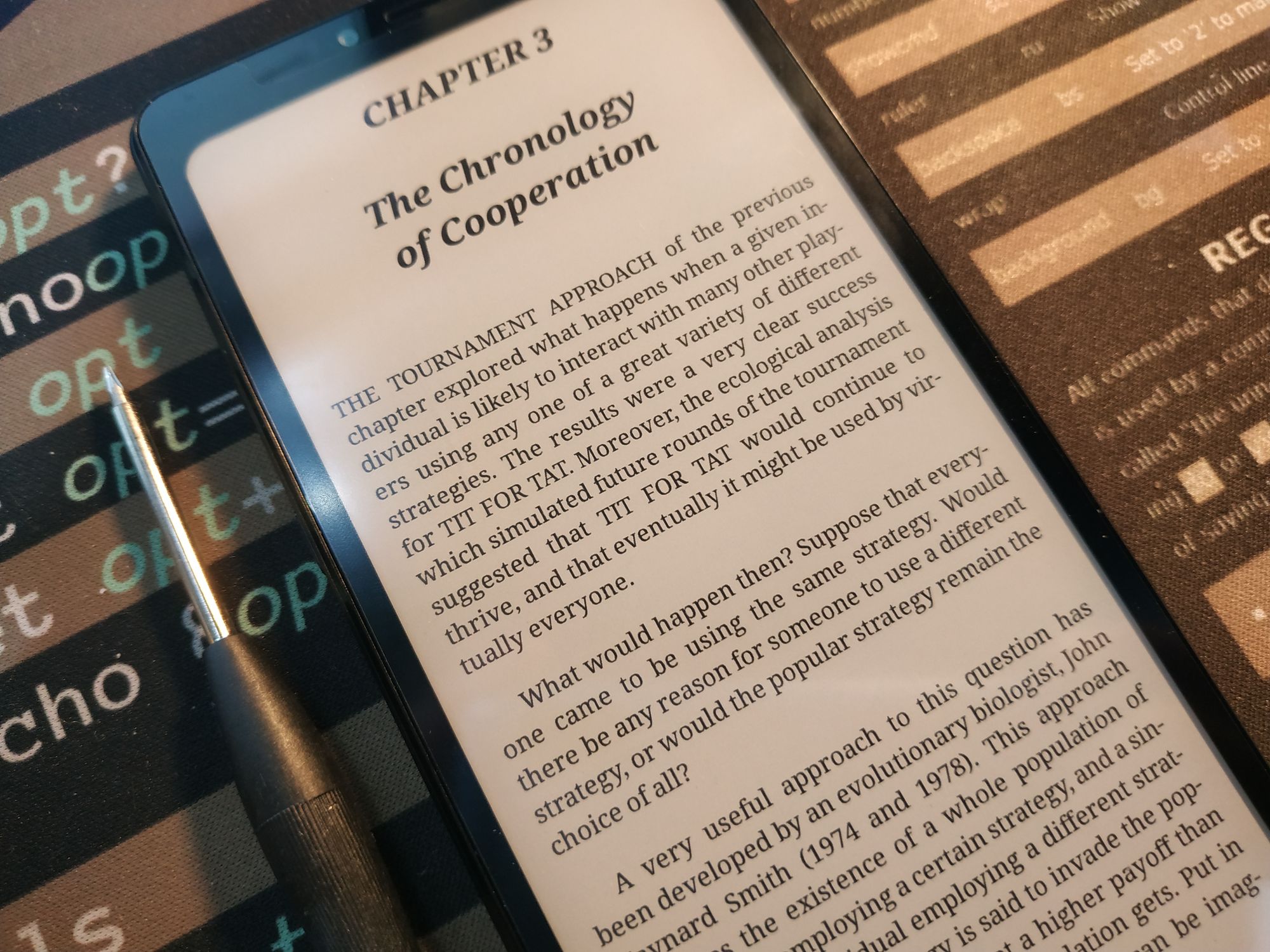
I use Clear for reading on KO Reader, then Balanced for when I'm on a scroll-heavy app, such as Brave or Feeder. You can also use EInkBro, which has a tap-to-scroll-down feature, with the Clear setting.
Reading is very good, as long as you're not going through large, important diagrams. Hisense's stock reader has a feature to use the phone as a reader even when locked (no touch input) through Volume Up/Down as page turn buttons, but this feature does not work for any other reader.
Navigating the phone through the stock launcher
Currently, the Hisense A9 forces you to use the stock launcher, because it's the only launcher with window management. Switching to another launcher renders the square system button useless.
Installing apps through alternative sources
You can use the Aurora store to fetch APKs from Google's Play store. For open-source applications it is preferable to install and use F-Droid. The Hisense comes with APK Pure pre-installed, but I avoided APK Pure as it has some privacy issues.
There are paid applications I can't use with this phone, no doubt (I paid for AIO Launcher, and I can't use it.) The workaround is to sign into Aurora with your Google account but there is a small chance Google will disable your account for using a non-Google Play, though there is no information as yet on the internet of this happening.
You may also have issues with map apps and other location based services, depending on what services you end up disabling.
Maintaining privacy
On regular phones with decent popularity, privacy at the system level can be achieved by replacing the OS with GrapheneOS or similar ROMs. For niche phones whose operating systems carry proprietary drivers, such as the driver running the e-ink screen, ROM replacement will likely mean losing those drivers that run the screen's refresh technology. For this reason, some trackers cannot be removed and must be blocked through a firewall. I use NetGuard on all my phones, so I find the 15 Euro price tag acceptable. Other free alternatives include Blokada and AdGuard.
Further reading
- I'll be making a dedicated post about the use of Universal Android Debloater and a few other tracker removal methods.
- I'll be making a post about what apps I use on this phone.

